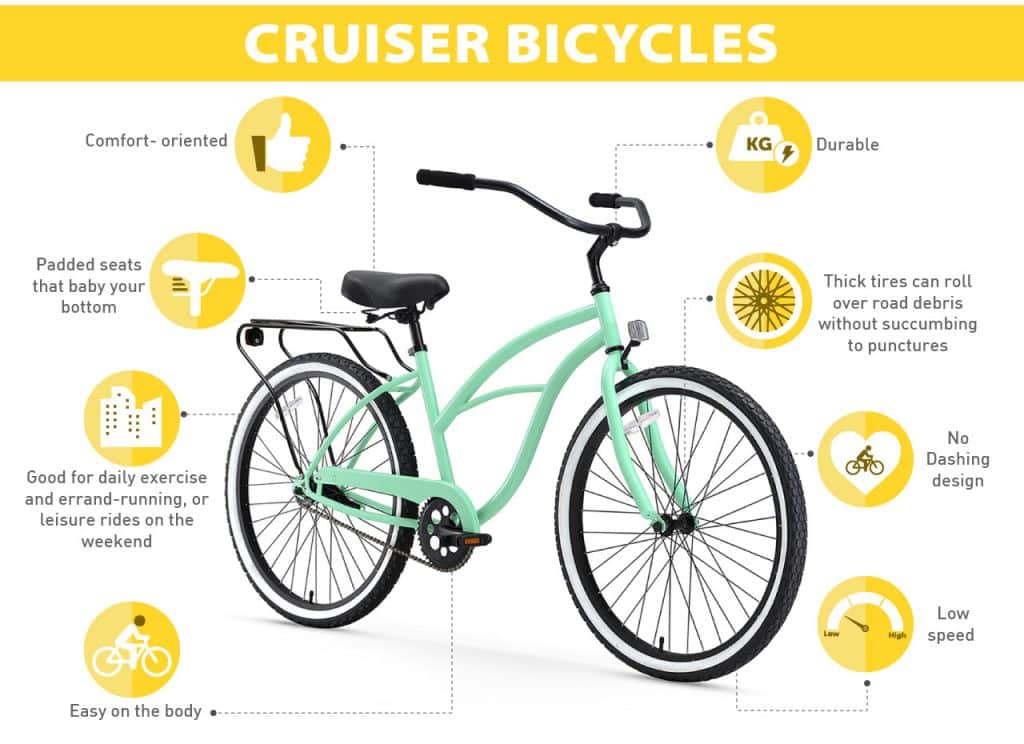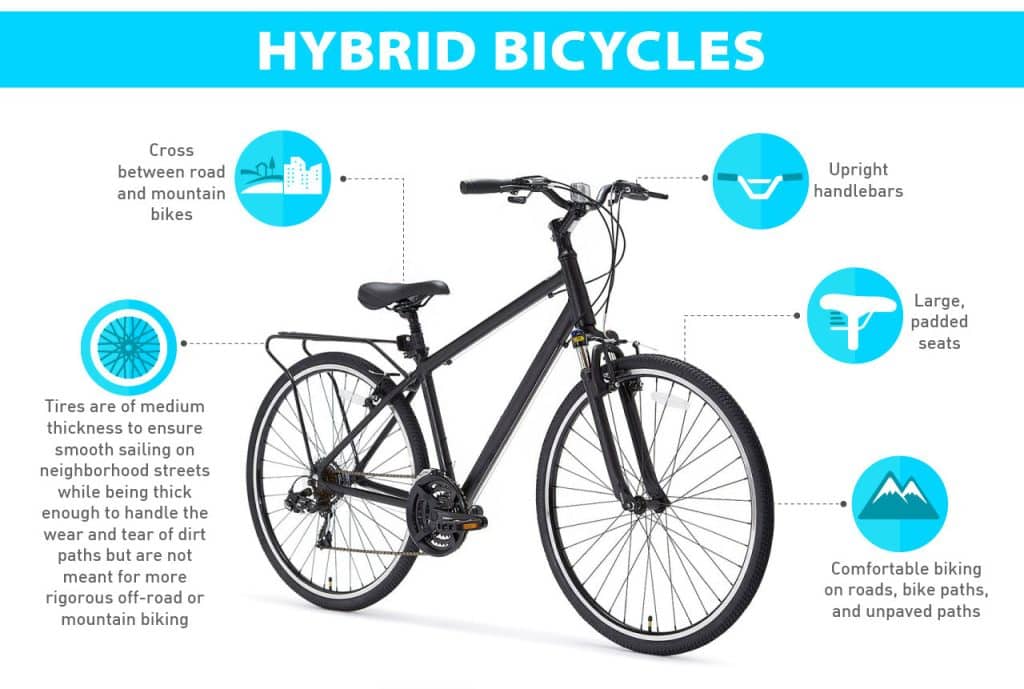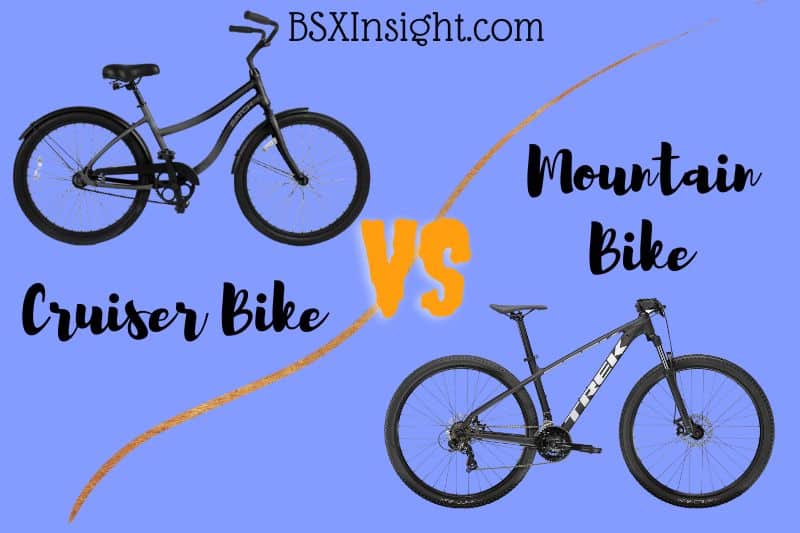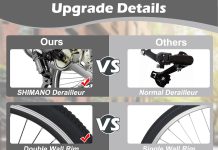We all love hopping on a bike and feeling the wind in our hair as we cruise down the open road, but have you ever wondered what sets a cruiser bike apart from a commuter bike? Although they may seem similar at first glance, these two types of bicycles cater to different needs and preferences.
While a cruiser bike is known for its laid-back and relaxed design, perfect for leisurely rides along the beach or through the park, a commuter bike is built with practicality and efficiency in mind, making it the ideal choice for those navigating city streets or commuting to work.
In this article, we will explore the key characteristics that distinguish these two types of bikes, allowing you to make an informed decision when choosing the perfect ride for your needs.
Table of Contents
Design and Appearance
Regarding design and appearance, cruiser and commuter bikes have distinct features that set them apart.
Frame design
Cruiser bikes typically have a classic and retro frame design, with a curved top tube and a relaxed geometry. This gives the bike a distinct and stylish look, reminiscent of the iconic beach cruisers of the past. On the other hand, commuter bikes often have a more modern and practical frame design, emphasizing functionality and practicality over aesthetics.
Handlebars
One notable difference in design can be found in the handlebars. Cruiser bikes often feature wide and swept-back handlebars, allowing riders to maintain an upright riding position and giving them a relaxed and comfortable feel. On the other hand, commuter bikes usually have flat or slightly curved handlebars, providing a more efficient and aerodynamic riding position for more incredible speed and maneuverability.
Saddle
The saddle, or seat, is another aspect where cruiser and commuter bikes differ in design. Cruiser bikes typically have large cushioned saddles designed for leisurely and comfortable rides. This helps to distribute weight across a larger surface area and reduces pressure on sensitive areas. Commuter bikes, however, often have narrower and firmer saddles, optimizing for efficiency and reducing friction when riding longer distances.
Fenders
Fenders, or mudguards, are often included on commuter bikes but are less common on cruiser bikes. Fenders help protect the rider from mud and water, especially during wet weather or when riding on gravel or uneven terrain. This feature is handy for daily commuting, where the rider may encounter various road conditions. Cruiser bikes, designed for leisurely rides, often prioritize aesthetics and may not have fenders as a standard feature.
Riding Position and Comfort
A bike’s riding position and overall comfort are crucial factors to consider when choosing between a cruiser bike and a commuter bike.
Upright riding position
Cruiser bikes are renowned for providing a comfortable and upright riding position. Their wide handlebars and relaxed geometry allow riders to sit in a more natural and relaxed position, reducing strain on the wrists, neck, and back. This riding position is ideal for leisurely rides and provides ease and comfort.
Handlebar position
The handlebar position plays a significant role in the overall comfort of the rider. Cruiser bikes’ handlebars are typically positioned higher than the saddle, allowing riders to maintain an upright posture and have a clear view of their surroundings. On the other hand, commuter bikes often have handlebars positioned lower than the saddle, promoting a more aerodynamic position and incredible speed.
Saddle design
Regarding saddle design, cruiser bikes offer broader and more cushioned saddles, providing a plush and comfortable seating experience. This is particularly suited for shorter rides or casual rides around the neighborhood. Commuter bikes usually feature narrower and firmer saddles, designed for longer rides and maximizing pedaling efficiency. The saddle design aims to reduce friction and pressure points, allowing for a more comfortable experience during extended periods of riding.
Gearing and Speed
Gearing and speed capabilities are essential when deciding between cruiser and commuter bikes.
Number of gears
Cruiser bikes typically have fewer gears compared to commuter bikes. This is because cruiser bikes are designed for leisurely rides on flat terrain, with minimal need for a wide range of gear. Most cruiser bikes feature a single-speed or three-speed drivetrain, providing simplicity and ease of use.
On the other hand, commuter bikes often come with a broader range of gears, allowing riders to tackle various terrains and inclines encountered during daily commuting or transportation. They may feature seven to twenty-one gears or more, providing the rider options to find the correct gear ratio for different riding conditions.
Gear ratios
Cruiser bikes typically have gear ratios that favor lower speeds and easier pedaling. This allows for a more relaxed and comfortable riding experience, ideal for leisurely beach or neighborhood rides.
Commuter bikes, in contrast, tend to have gear ratios that allow for faster speeds and more efficient pedaling. This is crucial for daily commuting or transportation, where riders may need to cover longer distances or navigate various terrains. The broader range of gears on commuter bikes enables riders to find the optimal gear ratio for different conditions, ensuring effortless pedaling on flats and hills.
Top speed
Due to their design and gearing, commuter bikes generally have a higher top speed than cruiser bikes. The more efficient riding position and broader range of gears on commuter bikes allow riders to achieve more incredible speeds, making them better suited for longer commutes or riding in urban environments where speed is essential.
Cruiser bikes, on the other hand, prioritize comfort and leisure, resulting in a more relaxed riding experience and a lower top speed. This is ideally suited for those who prefer a more laid-back approach to cycling and are not concerned with reaching high speeds.
Weight and Maneuverability
Weight and maneuverability are essential considerations when comparing cruiser bikes and commuter bikes.
Weight of the bike
Cruiser bikes tend to be heavier than commuter bikes due to their design and emphasis on comfort. The sturdy and often steel frames of cruiser bikes provide stability but add weight to the overall bike. This added weight can make cruiser bikes feel more stable and planted on the road, contributing to a smoother and more relaxed riding experience.
In contrast, commuter bikes are generally lighter as they prioritize speed and maneuverability. Materials such as aluminum or carbon fiber are commonly used in commuter bike frames to reduce weight without compromising strength. The lighter weight of commuter bikes allows for greater agility and maneuverability, making them more suitable for navigating traffic or tight spaces.
Agility and maneuverability
Cruiser bikes, with their heavier weight and slower handling, prioritize stability and comfort over agility and maneuverability. They are designed for more leisurely rides, emphasizing a smooth, relaxed cruising experience. The slower handling and stability of cruiser bikes make them ideal for casual rides, where the rider can enjoy the scenery and take their time.
Commuter bikes, on the other hand, prioritize agility and maneuverability. The lighter weight and more responsive handling allow the rider to quickly navigate through traffic, maneuver around obstacles, and easily make sharp turns. This makes commuter bikes better suited for urban environments where quick reactions and nimble handling are crucial.
Tires and Wheels
Tires and wheels play a crucial role in determining a bike’s overall riding characteristics and suitability.
Tire width
Cruiser bikes typically have wider tires than commuter bikes. The wider tires contribute to a more comfortable and stable ride, providing increased cushioning and better shock absorption. These wider tires offer better traction and stability on various surfaces, making them well-suited for leisurely rides on paved roads, gravel paths, or sandy beaches.
In contrast, commuter bikes often have narrower tires. The narrower tires reduce rolling resistance, making pedaling more accessible and more efficient. This is important for longer rides or daily commuting, as it allows riders to cover greater distances with less effort. The narrower tires also provide a smoother and faster ride on well-paved roads, enhancing speed and maneuverability.
Tread pattern
Cruiser bikes typically have tires with a smooth or lightly treaded pattern. This tread pattern is well-suited for maintaining traction on flat and even surfaces, providing a smooth and comfortable ride. As cruiser bikes are not designed for off-road or mountain biking, the lack of aggressive tread patterns is not a disadvantage.
On the other hand, commuter bikes may feature tires with a more aggressive tread pattern or slightly knobby tires. This tread pattern enhances grip and traction on different surfaces, especially when commuting in urban environments or riding on gravel or dirt paths. The tread pattern on commuter bike tires allows for better handling and stability, ensuring safe and confident riding on various terrains.
Wheel size
Cruiser bikes often feature larger wheels, typically 26 inches or 29 inches in diameter. The larger wheel size contributes to a more comfortable and stable ride, as the increased diameter helps to smooth out bumps and obstacles on the road. The larger wheels also provide a more relaxed riding experience, complementing the leisurely and comfortable nature of cruiser bikes.
Commuter bikes may have smaller wheels, such as 700c or 27.5 inches in diameter. The smaller wheel size reduces rotational weight and improves acceleration, making the bike more responsive and efficient. Smaller wheels also allow for better maneuverability and handling, especially in urban environments with common quick turns and tight spaces.
The choice of tire width, tread pattern, and wheel size ultimately depends on the intended use and the rider’s preferences. Cruiser bikes prioritize comfort and stability, while commuter bikes focus on efficiency and speed.










































